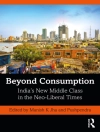This revised and expanded Third Edition of the internationally acclaimed Criminological Perspectives is the most comprehensive reader available in the field. Wide-ranging and global in scope and coverage, Criminological Perspectives will enable you to critically engage with the various concepts and theoretical positions that you′ll encounter throughout your studies.
In addition to essays that have had a seminal influence on the development of criminology, new articles have been included to cover topics of contemporary criminological significance, including:
– surveillance
– digitized crime
– terrorism and political violence
– environmental crime
– human trafficking
– techno-social networks
– narco-crime
– global inequalities
The 56 articles are organised thematically, complete with introductions that place them in context and to illustrate the approaches taken by different schools of criminological thought.
Criminological Perspectives will prove an indispensible resource, whether you′re studying criminology, criminal justice studies, socio-legal studies, penology, security studies, surveillance studies, or sociology.
สารบัญ
PART ONE: CRIMINOLOGICAL FOUNDATIONS
(1764) On Crimes and Punishments – Cesare Beccaria
(1791) Panopticon or the Inspection House, &C. – Jeremy Bentham
(1842) Of the Development of the Propensity to Crime – Adolphe Quetelet
(1895) The Criminal Type in Women and Its Atavistic Origin – Cesare Lombroso and William Ferrero
(1901) Causes of Criminal Behaviour – Enrico Ferri
(1845) The Condition of Working Classes in England – Frederick Engels
(1916) Criminality and Economic Conditions – William Bonger
(1898) Law and Authority – Peter Kropotkin
(1895) The Normal and the Pathological – Emile Durkheim
(1938) ′Social Structure and Anomie′, – Robert K Merton
PART TWO: CAUSES OF CRIME
(1987) Genetic Factors in the Etiology of Criminal Behaviour – Sarnoff A Mednick, William F Gabrielli Jr and Barry Hutchings
(1987) Personality Theory and the Problem of Criminality – H J Eysenck
(1999) A Criminological Research Agenda for the Next Millennium – David P Farrington
(1990) The Underclass – Charles Murray
(1984) Relative Deprivation – John Lea and Jock Young
(1987) Deviant Places: A Theory of the Ecology of Crime – Rodney Stark
(1994) The Generality of Deviance – Travis Hirschi and Michael R Gottfredson
(2000) The Routine Activity Approach as a General Crime Theory – Marcus Felson
(1973) The Etiology of Female Crime – Dorie Klein
(1988) Seductions and Repulsions of Crime – Jack Katz
PART THREE: CRIMINALISATION
(1957) Techniques of Neutralization – Gresham M Sykes and David Matza
(1963) Outsiders – Howard Becker
(1967) Mods, Rockers and the Rest: Community Reactions to Juvenile Delinquency, – Stanley Cohen
(1975) Toward a Political Economy of Crime – William J Chambliss
(1983) Crime, Power and Ideological Mystification – Steven Box
(1998) Race and Criminalization: Black American and the Punishment Industry – Angela Y Davis
(1986) Critical Criminology and the Concept of Crime – Louk H C Hulsman
(1986)The Need for a Radical Realism – Jock Young
(1999) Cultural Criminology – Jeff Ferrell
PART FOUR: CRIMINAL JUSTICE AND CRIME PREVENTION
(1975) On Deterrence – James Q Wilson
(1976) Giving Criminals Their Just Deserts – Andrew von Hirsch
(1982) The Value of Rehabilitation – Francis T Cullen and Karen E Gilbert
(1980) ′Situational′ Crime Prevention: Theory and Practice – Ronald V G Clarke
(1991) Social Crime Prevention Strategies in a Market Society – Elliott Currie
(1977) Conflicts as Property – Nils Christie
(1989) Reintegrative Shaming – John Braithwaite
(1991) Abolitionism and Crime Control – William De Haan
(1982) Broken Windows: The Police and Neighbourhood Safety – James Q Wilson and George L Kelling
(2005) The Spectacle of Crime, Digitized. CSI: Crime Scene Investigation and social anatomy – Martha Gever
PART FIVE: CONTROL-OLOGY: GOVERNANCE AND SURVEILLANCE
(1977) The Carceral – Michel Foucault
(1979) The Punitive City: Notes on the Dispersal of Social Control – Stanley Cohen
(1985) From the Panopticon to Disney World: The Development of Discipline – Clifford D Shearing and Philip C Stenning
(1992) The New Penology – Malcolm M Feeley and Jonathan Simon
(1992) Risk, Power and Crime Prevention – Pat O′Malley
(1997) Governing Through Crime – Jonathan Simon
(1994) Beyond Bladerunner: Urban Control. The Ecology of Fear – Mike Davis
′Globalising Surveillance: Comparative and Sociological Perspectives – David Lyon
(2008) Ordering Insecurity: Social Polarisation and the Punitive Upsurge′ – Loïc Wacquant
PART SIX: GLOBAL RISKS AND HARMS
(2000) Globalisation, Reflexivity and the Practice of Criminology – Janet Chan
(1998) Poverty Goes Global – Neil Middleton
(2011) The Drug Trade: The Politicization of Criminals and the Criminalization of Politicians – Moisés Naím
(2002) The Terrorist Threat: World Risk Society Revisited – Ulrich Beck
(1993) Human rights and Crimes of the State – Stanley Cohen
(2003) Environmental Issues and the Criminological Imagination. – Rob White
(2009) Trade Secrets: Intersections Between Diasporas and Crime Groups in the Constitution of the Human Trafficking Chain – Jackie Turner and Liz Kelly
(2006) The Criminology of Hybrids: Rethinking Crime and Law in Techno-social Networks – Sheila Brown
เกี่ยวกับผู้แต่ง
John Muncie is Emeritus Professor of Criminology at the Open University, UK. He is the author of Youth and Crime (5th edition, Sage, 2021), and he has published widely on issues in comparative youth justice and children’s rights, including the co-edited companion volumes Youth Crime and Justice and Comparative Youth Justice (Sage, 2006). He has produced numerous Open University texts and readers, including Crime: Local and Global (Willan, 2010), Criminal Justice: Local and Global (Willan, 2010), The Problem of Crime (2nd edition, Sage, 2001), Crime Prevention and Community Safety (Sage, 2001) and Imprisonment: European Perspectives (Harvester, 1991). He has also contributed nine volumes to the The Sage Library of Criminology (Sage, 2007–2009). He is co-editor of the Sage journal Youth Justice: An International Journal.












